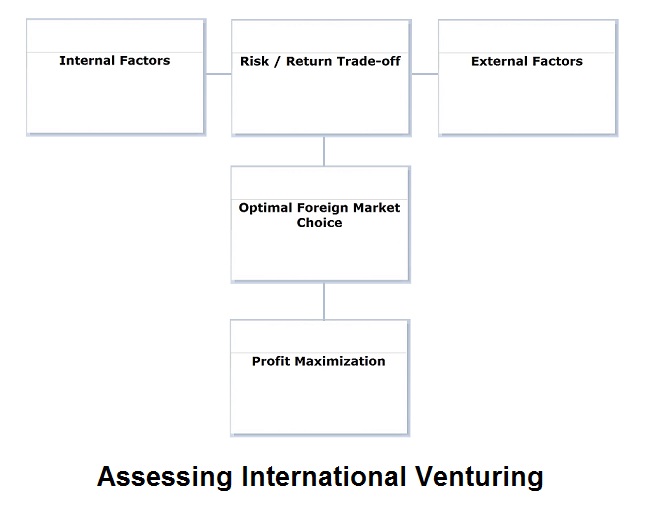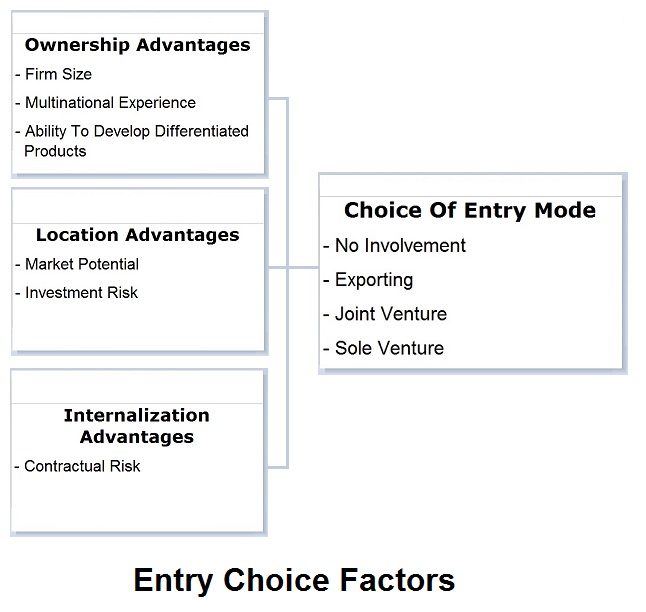Firms considering entry into international venturing need to carefully analyse and consider key aspects such as Assessing International Venturing and Choosing An International Venturing Model.
Assessing International Venturing
The following elements should be considered when Assessing International Venturing:

Corporate strength
Competitive position
Corporate policy
Product characteristics
External Factors
Home government policies
Host market opportunity
Host market economic development / performance
Host market political environment
Comparative host country costs
Geo-cultural environment
Alternatives
Compare the alternatives according to risk to return benefit and cost to control trade-off.
The level of risk can be moderated by the type of control attained.
Hosts
Use the outcome findings of the analysis conducted to choose an optimal host market to target for entry.
Profit
The venture should aim to be profitable as soon as possible.
International Venturing Models
Four main approaches to internationalisation include:
Uppsala Model
Eclectic Paradigm and Transaction Cost Analysis
Industrial Network Approach
Business Strategy Approach
Uppsala Model
The contention of this approach is that internationalising entities develop their activities in foreign ventures over time in an incremental fashion based on their knowledge development. The development is done according to psychic distance, i.e. firms expand first into close psychic markets and only later into those that are at a greater psychic distance once the firm's knowledge has developed. The critical kind of knowledge acquired is experiential knowledge that can only be gained through personal experience, not objective knowledge that can be taught. The decision on how to enter a specific foreign market is made internally.
Eclectic Paradigm and Transaction Cost Analysis
The eclectic paradigm and total cost analysis approach explains the extent, form and pattern of international production where entry decisions are made in a rational manner based on an analysis of the costs of the transaction. Market entry is chosen based on evaluation of the costs of an entry mode relative to the objectives of the internationalising entity. The decision on how to enter a specific foreign market is made internally.

Industrial Network Approach
The industrial network approach is where the internationalising entity takes into account and evaluates its own position in relation to customers in a given market and also takes into account the environment of the target market in relation to other actors engaged in that market, for example, competitors. The decision on which countries to enter and which customers to supply is based on the interpretation of the environment and as a supplier into the network of firms engaged in production, distribution and use of goods and services in that environment.
Business Strategy Approach
The business strategy approach is based on pragmatism where the internationalising entity makes trade-offs between a number of variables when deciding on international venturing and the methods it uses to venture internationally. Trade-off choice is made among competing strategies of expansion. Matters that influence the trade-off decisions include:
The market opportunity
Own resources
Own managerial policy and vision
Market accessibility
Informal barriers
Psychic distance